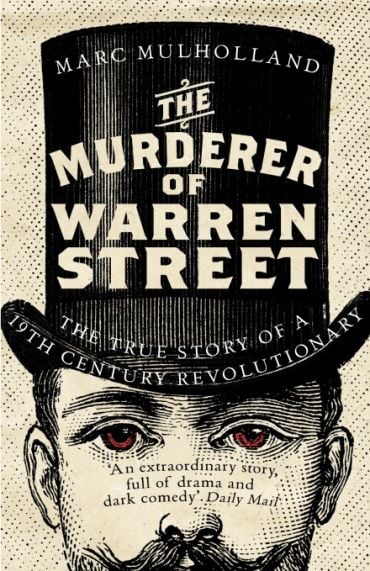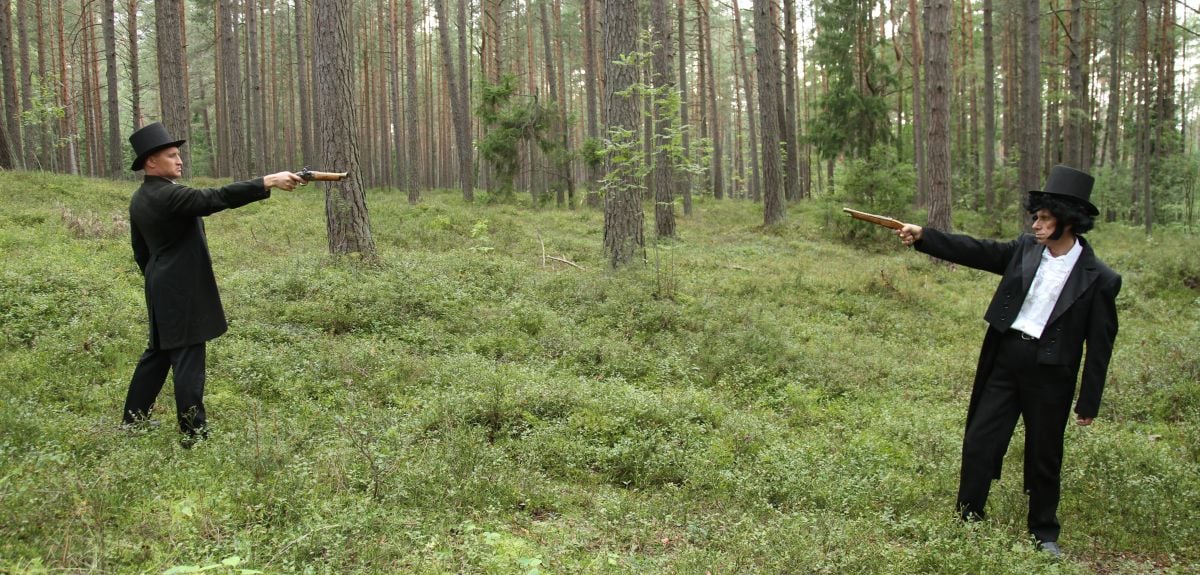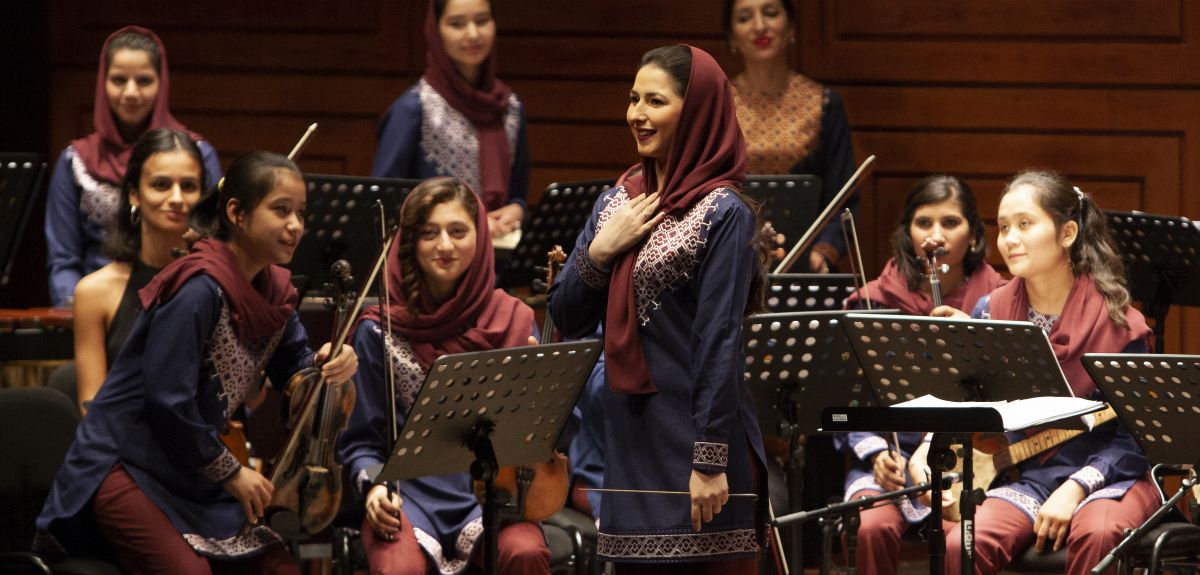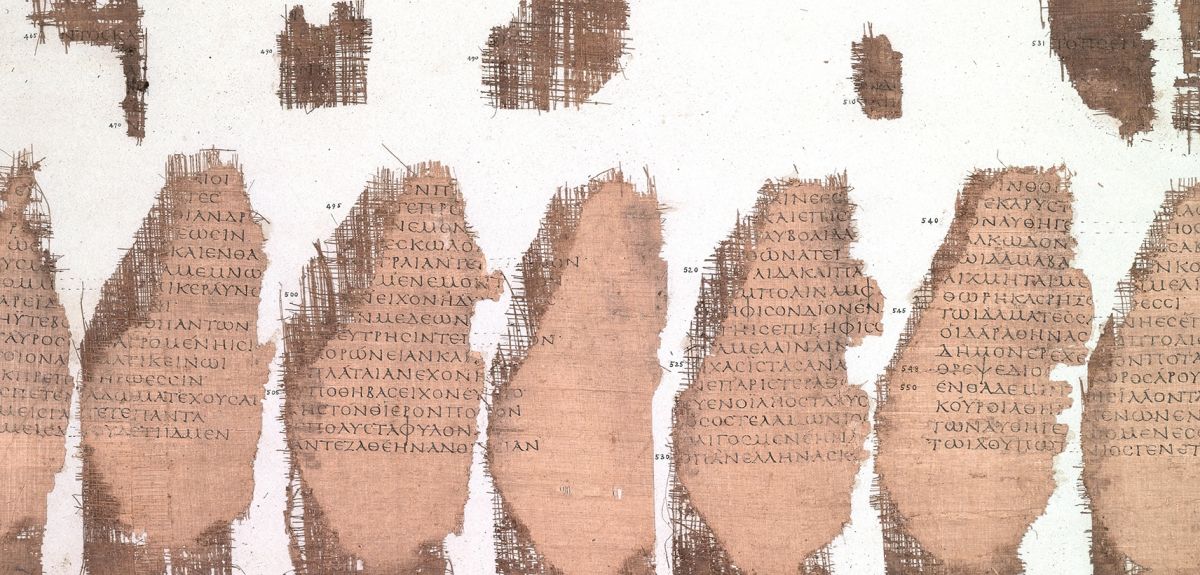Features
In his new book, The Murderer of Warren Street, Professor Marc Mulholland, a professor of modern history at St Catherine's College, Oxford, reveals the true story of the notorious 19th-century revolutionary Emmanuel Barthélemy. This article, first published in the Irish Times, focuses on the last fatal duel held in England...
By Marc Mulholland
On a foggy morning in October 1852, two French men stopped at one of England’s great beauty spots, Priest Hill, a viewpoint near Windsor rising above the Vale of the Thames. Both were revolutionary republicans, socialists, and refugees from their home country. They took off their coats, received duelling pistols from their seconds and stood opposite each other. At signal, Frédéric Cournet advanced, took aim, and pulled the trigger.
Frédéric Cournet, was a large man, in his forties, who carried himself with the confidence of a former naval war-hero. He had led courageous resistance on the streets of Paris against the recent coup d’état against the constitution launched by President Louis Napoleon. Cournet had killed a guard to escape his captors and fled to London a wanted man.
Cournet’s duel was with Emmanuel Barthélemy, still in his twenties but with a lifetime’s experiences. Born of the working classes, Barthélemy had been a revolutionary conspirator since the age of sixteen. He had served nine years as a galley-slave after attempting to assassinate a police man. Little daunted, after release he fought as a barricade commander in a major workers’ insurrection against the bourgeois government. Arrested again, Barthélemy made international headlines by his daring escape from the notorious military prison Cherche-Midi in central Paris. Disguised as a priest, he slipped out of the country and made for England.
Why were these comrades of revolution meeting in mortal combat? Fundamentally, they were very different types. Victor Hugo, in his great novel Les Miserables, painted a pen-portrait. Cournet was “a burly broad-shouldered man, red-faced, heavy-fisted, daring and loyal”. He was “intrepid, energetic, irascible and temperamental.” Barthélemy was “thin and puny, sallow-faced and taciturn, a sort of tragic outcast.” Cournet was something of a blowhard. He was well-known as a bully and an inveterate duellist. Barthélemy was a fanatic: disciplined, ruthless, and filled with a cold rage against society.
It was an Irish man and graduate of Trinity College Dublin, Arthur Reeves, who explained the affair to a fascinated public. Reeves, who had spent 22 years living in France as a language tutor, kept company with the French political émigrés in London. The “boiling nature” of French blood, he reported, made them ultra-sensitive “upon the point of honour”. Cournet had spread rumours about Barthélemy’s girlfriend, suggesting she was a prostitute. Most men, knowing Cournet’s reputation, might have turned a deaf ear. For Barthélemy, however, the slight was not just personal. The dignity of his class and his revolutionary enterprise was at stake. Cournet refused to apologise and a duel was inevitable.
 'The Murderer of Warren Street' by Marc Mulholland (Windmill)
'The Murderer of Warren Street' by Marc Mulholland (Windmill)Cournet confidently let loose his fire, but missed his aim. Now it was Barthélemy’s turn. He pulled the trigger, but the gun misfired. He tried again, it misfired again. In a growing frustration of terror, Cournet threw his weapon at Barthélemy’s head. “Use mine!” Barthélemy picked it up, took aim and fired. Cournet fell to the ground, mortally wounded. He died later that night in the nearby Barley Mow Inn. For years afterwards his ghost was reputed to haunt the place.
Barthélemy and the duelling ‘seconds’ - friends and assistants to the ‘principals’ - fled the scene, but the new electric telegraph system sent news ahead, and police arrested them at Waterloo station. They were charged with murder.
Duelling had been a common social practice. Prime Minister William Pitt, the Duke of York, even Daniel O’Connell, the Irish Liberator, had all defended their honour on the field. Though technically a grievous criminal offence, duelling was in effect permitted for aristocrats, officers and gentlemen. It was only denied to the common people. The normal practice was for suspects to be released on bail before being found ‘not guilty’. This had been a republican duel, however, and Barthélemy and his seconds were working class. They were flung in jail to await trial.
Once more a curious Irish connection comes into play. Just a few months before the duel, in July 1852, British soldiers had fired upon a crowd in the small manufacturing town of Sixmilebridge in County Clare, killing six peasants. The occasion had been a tumultuous election assembly, with locals under the leadership of their priests shouting against landlord influence, but there is little evidence that soldiers had been seriously provoked or threatened. British opinion was shocked not by the massacre, however, but by the jury of the coroner’s court bringing in a verdict of ‘wilful murder’ against the soldiers and the magistrate. This should have meant imprisonment of the accused until their criminal trial. Instead the Government-appointed Attorney General intervened to order their release on bail. Shortly afterwards he struck down the coroner’s court verdict.
At the Windsor Assizes, the lawyers defending Barthélemy and the others seized upon this legal chicanery. If soldiers could be released on bail as men of good reputation, they asked, why not these honourable duellists? It was an embarrassing moment for British justice, and a special appeal court had to be convened to adjudicate the point of law.
Unsurprisingly, the defence motion was denied, but in so doing the judges had to state with unprecedented firmness that duelling, in fact, was not a crime to be mitigated by honour. It could no longer be winked at as a suitable affair for gentlemen. An important principle had been established. This, as it turned out, would be the last fatal duel ever to be fought on these islands.
Barthélemy and the others were held on bail, went to trial, and were found guilty. The jury, however, brought in a verdict of manslaughter and the sentence was a mere six months. Barthelemy’s extraordinary career was far from over. Upon release, he planned the crime of the century - to assassinate Louis Napoleon, now Napoleon III, Emperor of the French. His furious temper got the better of him, however, and when his employer resisted Barthelemy’s attempt to extort revolutionary funds, a fatal fight ensued. In January 1855, in the falling snow, Barthelemy was hanged for murder outside Debtors’ Gate at Newgate prison.
The Murderer of Warren Street by Marc Mulholland is published in paperback by Windmill.
The 2019 Novozymes Prize of DKK 3 million is being awarded to Professor Dame Carol Robinson at the Department of Chemistry, University of Oxford, for her scientific breakthroughs in use of mass spectrometry for proteome analysis. Her methods are widely used in the biotech industry and have contributed to identifying both new protein drugs and new drug targets.
Professor Robinson’s journey into the world of research was quite unusual.
Working on mass spectrometry as a lab technician at Pfizer in Kent, United Kingdom, she started studying chemistry through evening classes. She received a Higher National Certificate and then left Pfizer to take an MSc degree in chemistry before completing a PhD at the University of Cambridge.
She then took an eight-year career break to concentrate on her family and raise her three children.
Returning to science, she put her energy into analysing protein complexes and went on to become the first female professor of chemistry at the University of Oxford.
Over the past two decades, Professor Robinson has been one of the main forces behind the development of mass spectrometry from a simple method for measuring the mass of small molecules to an advanced technique for measuring interactions between some of our body’s major macromolecules.
Her research has contributed to improving the understanding of membrane proteins, which play a part in many diseases and conditions, including cancer and schizophrenia.
Professor Robinson is receiving the 2019 Novozymes Prize of DKK 3 million for her unique efforts. The Prize is awarded to recognise outstanding research or technology contributions that benefit the development of biotechnological science for innovative solutions.
Professor Robinson said: 'I am extremely honoured to receive this prestigious award. I read the impressive list of previous recipients before me and am delighted to be joining this group.'
Jens Nielsen, Chair of the Novozymes Prize Committee, said: 'Carol Robinson almost single-handedly founded a subfield of mass spectrometry proteomics. She is a creative, innovative and fearless researcher and a role model for all scientists. Her unflinching pursuit of the controversial notion has now become a highly productive mainstream. Her methods have contributed to identifying both new protein drugs and new drug target interactions and has led to the development of innovative biotechnological solutions. In all respects, Carol Robinson is a worthy recipient of the 2019 Novozymes Prize.'
Soap bubbles as a vehicle
Among Professor Robinson’s many achievements is discovering how to characterise proteins in cell membranes. These are hugely important drug targets, but they are also incredibly hard to study because one part of the protein exists inside a hydrophobic membrane, whereas the parts inside and outside of the cell are hydrophilic.
'We got the idea to coat them in detergent and then send them into the mass spectrometer in a giant soap bubble. And miraculously, this bubble shield really protects them, so they are released into the gas phase intact in a folded state,' Professor Robinson explained.
In a series of landmark studies, Professor Robinson has unravelled the structure of the proteins synthesising our cell’s energy currency, ATP, and later G protein–coupled membrane receptors, which are targets for many drugs.
Altogether, many of the techniques discovered by Professor Robinson are now used routinely for rapid antibody characterisation in the pharmaceutical industry and have advanced the use of antibodies for treating people with cancer and other diseases.
'This is quite amazing. I have always hoped my findings would contribute to medicine,' said Professor Robinson.
Professor Dame Carol Robinson will officially receive the Novozymes Prize at a prize ceremony on 15 March in Bagsværd, Denmark.
TORCH (The Oxford Research Centre in the Humanities) will welcome Professor Joy Owen as its Global South-Mellon Visiting Professor 2018-2019.
Professor Owen is Head of Department and Associate Professor of Anthropology at the University of the Free State, Bloemfontein in South Africa. Prior to her employment at the UFS, she was Head of Department (Anthropology) and Deputy Dean of Humanities at Rhodes University, Grahamstown.
Professor Owen's research currently explores the social networks of South African transnational migrants who have migrated to Germany, Australia and New Zealand. In the process of doing so she is considering the importance of social and cultural capitals to the ‘successful’ migration of South Africans to these three countries. Her sojourn in Germany in 2016 gave her first-hand experience of transnational migration and the difficulties inherent in ‘connecting’ with those who are nationally different. Over the next few years, she will explore these three sites more specifically through direct participation and observation.
During the period of her visiting fellowship at Oxford, Professor Owen plans to focus on two strands of research that are related to each other. The first originates within her doctoral research on Congolese transmigrants in Cape Town, South Africa. The second arises from her interest in the South African ‘diaspora’ present in New Zealand and Australia. Her knowledge and expertise are a timely contribution to work that is ongoing to make curricula and conversations at Oxford more inclusive.
Professor Owen said: ‘I am pleased to be joining TORCH and working with both Wale Adebanwi and the African Studies Centre at this exciting time, and for my research to be so warmly received by colleagues in the humanities at Oxford. I am looking forward to teaching and engaging with students and sharing ideas and perspectives on research, racialised identities and migration.’
Professor Wale Adebanwi, Director of the African Studies Centre and Rhodes Professor of Race Relations at the University of Oxford, said: ‘Joy is a wonderful addition to TORCH and the Faculty of Anthropology. Her research has been influential and pioneering and throws light on important topics such as transnational migrations. Joy will mentor students, lead open events in collaboration with the African Studies Centre and the Africa-Oxford Initiative, and contribute to Oxford in a number of other ways while she is with us.’
Professor Owen will be based at TORCH and St Anne's College during Trinity Term. Her works include the monograph Congolese Social Networks: Living on the Margins in Muizenberg, Cape Town (Lexington Books: 2015), and articles such as “Xenophilia in Cape Town, South Africa: New Potentials for Race Relations?” in City and Society Vol 28.3 (2016), “Transnationalism as Process, Diaspora as Condition” in Journal of Social Development in Africa Vol 30.1 (2015). Her most recent publications are “Humanising the Congolese Other: Love, Research and Reflexivity in Muizenberg, South Africa”, published in R. Boswell and F. Nyamnjoh (eds.), Postocolonial South-African Anthropologies, in 2017, and “Sade – By your Side” published in Suomen Antropologi: Journal of the Finnish Anthropological Society Vol 43.2 (2018).
The TORCH Global South Visiting Professorships Programme is designed to bring world-leading figures to the University of Oxford for at least one term and to be included in the teaching and research environment, hosted by leading academics in the humanities. Funded by the Andrew W. Mellon Foundation, the programme is a collaboration between the faculties of Oxford's Humanities Division and the colleges of the University of Oxford.
By Dr Cayenna Ponchione-Bailey, junior research fellow at Somerville College; college lecturer in music at St Catherine’s College; postdoctoral researcher on the Transforming 19th-Century Historically Informed Practice project; associate conductor, Orchestra of St John’s.
In Afghanistan, young women making music in public is a bold political act. To been seen, to be heard — particularly through musical expression — is radical for women living in Afghanistan today. Yet there is a group of young women defying all the odds to assert their right to make music — they form Ensemble Zohra, the first all-female orchestra in Afghanistan. Through their courage they are pushing back 40 years of repression and inspiring a whole new generation of young men and women. In March, these young women will be in residence in Oxford for a week in a historic visit which promises to be the beginning of an exciting and enduring relationship between the Afghanistan National Institute of Music and the city of Oxford.
Following the Soviet invasion of Afghanistan in 1979 and the rise of the Taliban, a rich musical culture was silenced for decades with women’s access to musical participation completely forbidden. Despite the political and security changes after 2001, there are still large portions of the Afghan population that do not approve of music-making, especially for women and even more particularly in mixed groups of men and women. Pushing these social boundaries, Dr Ahmad Sarmast founded the Afghanistan National Institute of Music (ANIM) in 2010. ANIM is co-educational and teaches the national curriculum alongside a full music programme including history, theory and practical performance on both traditional Afghan and Western classical instruments.
Based in Kabul, ANIM is dedicated to providing access to music education across all sectors of Afghan society, ensuring that street children and orphans have as much access as more middle-class families. Students from the outlying provinces often move to Kabul to live in orphanages as much to be in proximity as to be safe from family members who disapprove of their musical activities.
The school is a ‘safe space’ for the girls (from age a very young age through to their early 20s) where they are equal to their male peers in all ways. While girls participate in all aspects of musical performance alongside the boys, in 2015, Meena, a young trumpet player approached Dr Sarmast because she wanted the girls to have their own group, to take ownership of their performance and repertoire and form an all-female orchestra—Ensemble Zohra.
I first became aware of Ensemble Zohra through an online news article about Negin Khpalwak, the first Afghan female orchestra conductor, with whom I felt immediate sympathies as my own youth was spent trying to become an orchestra conductor in the middle of Alaska. Negin had to move from her traditional Pashtun community in rural Afghanistan to Kabul when her uncle threatened to kill her if she pursued her musical ambitions. Let’s not pretend for an instant that growing up in Alaska and living in an orphanage in Kabul are the same things, but what they do have in common is a remoteness from the rich orchestral landscape that is taken for granted in the UK and throughout much of Europe. Throughout the rocky and unpredictable journey that is any conducting career, there is no replacement for the multitude of experiences and knowledge gained by having access to such a wide range of orchestral practices and musicians. I was instantly inspired by her story and began to lobby my orchestra to bring her to the UK for a two-week professional development programme. Very quickly the conversation turned towards bringing the entire group here and thus began a life-changing journey…
It didn’t feel right to invite the young women here without going to meet them first, so within a few months I had booked a flight to Kabul and spent a week visiting the music school. I was fortunate to have local hosts who helped me navigate the city safely, but even in Kabul which is under the control of the Afghan Government, I only entered buildings with armed guards and frequently underwent pat-downs and bag searches, even to enter malls or restaurants. Students are not able to take instruments home with them to practice as the risk of violence and theft is too high. In 2014 a public performance was attacked by a suicide bomber where one audience member died and the school’s director nearly lost his life. Fortunately, no students were killed in the blast. A week after I left, a school in another district of Kabul was attacked killing 48 pupils and teachers. But that is the reality for those pushing forward on the ground in Afghanistan.
As an orchestra conductor and academic with a specialism in the social psychology of orchestral music-making, I found the situation at the school fascinating. Unlike El Sistema’s project of cultivating primarily Western orchestral practices, all of the orchestras at the school combine traditional Afghan and Western classical instruments, performing arrangements of traditional and popular Afghan and Western classical music. In doing so the practice re-signifies orchestral music-making, creating a uniquely Afghan sound and musical culture. Naturally, it is not as simple as that, and coming in from the outside I immediately saw tensions between a variety of potential objectives. One such tension lies in how one balances the development of individual musicians, such as those with orchestral aspirations and potential on an international stage, with the desire to promote an authentically Afghan musical practice when there is yet to be a professional (or even amateur, for that matter) orchestral music scene in Afghanistan.
Becoming a musician in Afghanistan is not straightforward — especially if you are female. There are no orchestras to audition for or regular chamber music series in concert halls, nor are there acres of budding pianists whose parents will bring them to your studio for weekly lessons. Public performances are risky. A life in music for these young people will require an incredible amount of innovation, creativity, risk-taking and perseverance. They will become cultural leaders in the process.
Inviting them to Oxford for a week-long residency is one way that we can support this journey, and in exchange we will be opened to a whole new way to be an orchestra, new musical landscapes and new friendships. In residence at Somerville College, the young women will be embedded in an environment that has spearheaded the education and empowerment of women for over a hundred years. Ensemble Zohra will rehearse and perform with Oxford University students, young musicians from the Oxfordshire County Music Service, and the professional musicians of the Orchestra of St John’s.
Ensemble Zohra will be giving public performances at the British Museum on 15 March; Harrow Arts Centre on 16 March; and Sheldonian Theatre on 17 March. The traditional section of the orchestra will also be performing on a special programme led by musicologists Professor John Bailey (Goldsmiths) and Veronica Doubleday at the Holywell Music Room on 13 March. A panel discussion on women’s education in Afghanistan will take place at Somerville College on 14 March. More information about these events and information on how to buy tickets can be found at www.osj.org.uk.
Babel: Adventures in Translation, a new exhibition at the Bodleian Libraries opening on 15 February, explores the power of translation from the ancient myth of the Tower of Babel to the challenges of modern-day multicultural Britain in light of Brexit. Featuring a stunning range of objects from the Libraries’ collections, the exhibition shows how ideas and stories have travelled across time and territory, language and medium.
Babel explodes the notion that translation is merely about word-for-word rendering into another language, or that it is obsolete in the era of global English and Google Translate. It shows how translation is an act of creation and interpretation, and has been part of our daily lives since time began.
Katrin Kohl, Professor of German Literature at the University of Oxford, and co-curator of the exhibition said: “Babel explores the tension between the age-old quest for a universal language, like Latin, Esperanto or global English today, and the fact that communities continue to nurture and retain their own languages and dialects as part of their cultural identity. The exhibition illuminates how translation builds bridges between languages and how the borderlands between languages can be fertile ground for resistance, comedy and creativity.”
Ancient treasures – such as a second-century papyrus roll of Homer’s Iliad, a mathematical textbook from ninth-century Byzantium, and a beautiful illuminated manuscript of Aesop’s Fables – will be shown alongside contemporary objects such as signage, branding and leaflets that draw on multiple languages to speak to a global audience. Exploring fantasy and fairy tales, the translation of divine texts and the endeavour to create a universal scientific language, the exhibition will appeal to adults and young people alike and anyone interested in language, science, religion and the power of stories.
Exploring themes of multiculturalism and identity, the exhibition considers issues that are more relevant than ever as Britain approaches Brexit. Iconic ancient texts and modern ephemera remind us that the British Isles always have been, and still are, multilingual. Looking ahead – to the very distant future – the exhibition also considers the thorny problem of how to mark the sites where nuclear waste is buried so that the warning will still be intelligible many thousands of years from now.
Highlights of the exhibition include:
- The spectacular Codex Mendoza, a unique manuscript from around 1541 which uses picture writing alongside the Mexica language, Nahuatl and Spanish in order to brief Spanish imperial rulers on their new lands in Mexico
- A 3,500-year-old bowl inscribed with a mysterious script that still resists deciphering
- An unpublished notebook kept by JRR Tolkien revealing how he created his own ‘Private Scout Code’ at the age of 17 while studying Esperanto. This is the first known example of him inventing an alphabet, and foreshadows his fictional Elvish alphabet and languages
- Matisse’s illustrations from a rare edition of James Joyce’s Ulysses in which the artist sketched scenes from Homer’s Odyssey rather than Joyce’s novel, which he had not read
- Different versions of Cinderella – by Charles Perrault, the Grimm brothers, Shirley Hughes, and in pantomime and film – showing how stories have been transferred across cultures, resulting in new interpretations across time, space and different media
- Iconic medieval texts that speak of Britain’s rich linguistic heritage, including The Red Book of Hergest, one of the four Ancient Books of Wales, and The Annals of Inisfallen, which chronicles the medieval history of Ireland
- An experimental 1950s computer programme designed by Christopher Strachey to generate convincing love letters
- Dans le Chip Shop, a humorous sketch from Miles Kingston’s book Let’s Parler Franglais!, which mixes English and school-child French to comic effect and celebrates its 40th anniversary this year
- A mathematical textbook from 1557, The Whetstone of Witte, containing the first recorded use of the equals sign
Richard Ovenden, Bodley’s Librarian, said: “Babel is a fascinating exhibition that shows us how translation has shaped our modern lives – in religion and science, politics and literature, food and health. The Bodleian Libraries is an incredible treasure-house of great works that have grown out of the transfer processes between languages, and the exhibition showcases some of these extraordinary items with great effect, changing the way we think about translation today.”
The exhibition was curated by the following co-curators at the University of Oxford alongside Professor Kohl: Dennis Duncan, a writer and translator, and Visiting Fellow at St Peter’s College; Stephen Harrison, Professor of Latin Literature and Fellow and Tutor in Classics at Corpus Christi College; and Matthew Reynolds, Professor of English and Comparative Criticism and Fellow and Tutor in English at St Anne’s College.
The exhibition team is collaborating with Creative Multilingualism, a four-year research programme led by Professor Kohl, which is funded by the Arts and Humanities Research Council as part of the Open World Research Initiative. The project is investigating the interconnection between linguistic diversity and creativity, with Professor Reynolds leading a research strand on Prismatic Translation.
In the Bodleian’s Babel exhibition, visitors will be able to explore digital interactives including the opportunity to listen to texts from the exhibition read in their original languages, ranging from Tibetan and Sanskrit to Italian and German.
Babel will be accompanied by an engaging programme of free talks and events at the Bodleian’s Weston Library, including a Library Late event on 8 March, which will be an interactive evening celebrating languages and cultures. For more information visit www.bodleian.ox.ac.uk/whatson.
An accompanying publication to the exhibition, Babel: Adventures in Translation, will be released by Bodleian Library Publishing on 15 February, and is available for pre-order from www.bodleianshop.co.uk. The book is authored by Dennis Duncan, Stephen Harrison, Katrin Kohl and Matthew Reynolds.
- ‹ previous
- 55 of 248
- next ›





 Teaching the World’s Future Leaders
Teaching the World’s Future Leaders  A blueprint for sustainability: Building new circular battery economies to power the future
A blueprint for sustainability: Building new circular battery economies to power the future Oxford citizen science project helps improve detection of antibiotic resistance
Oxford citizen science project helps improve detection of antibiotic resistance The Oxford students at the forefront of the fight against microbial resistance
The Oxford students at the forefront of the fight against microbial resistance  The hidden cost of AI: In conversation with Professor Mark Graham
The hidden cost of AI: In conversation with Professor Mark Graham  Astrophoria Foundation Year: Dr Jo Begbie reflects on the programme’s first year
Astrophoria Foundation Year: Dr Jo Begbie reflects on the programme’s first year World Malaria Day 2024: an interview with Professor Philippe Guerin
World Malaria Day 2024: an interview with Professor Philippe Guerin From health policies to clinical practice, research on mental and brain health influences many areas of public life
From health policies to clinical practice, research on mental and brain health influences many areas of public life From research to action: How the Young Lives project is helping to protect girls from child marriage
From research to action: How the Young Lives project is helping to protect girls from child marriage